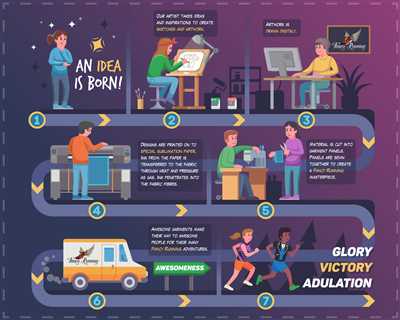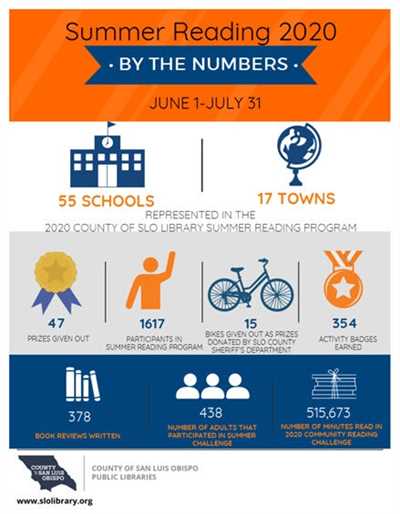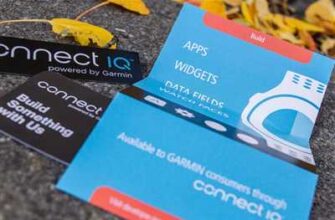
If you’re working in the field of marketing or have an online presence, you’ve probably heard about infographics. But what exactly are infographics and why are they so important? In this article, we’ll dive into the world of infographics and explore how you can effectively use them to communicate complex information to your audience.
Infographics are visual representations of data or information. They combine text, images, and design elements to present information in a way that is visually appealing and easy to understand. Infographics can help you convey your message in a more interesting and engaging way, making it easier for your audience to digest and remember the information you’re presenting.
So why should you use infographics in your content marketing strategy? For one, infographics are a great way to engage your audience and keep them interested in your content. People are naturally drawn to visuals, and infographics can help you grab their attention and hold it. By presenting information in a visually appealing way, you can make your content more memorable and shareable, increasing its reach and impact.
Another reason to use infographics is that they can help you position yourself as an expert in your field. By presenting information in a well-designed and visually appealing way, you can show your audience that you have a deep understanding of the subject matter. This can help establish trust and credibility with your audience, making them more likely to listen to what you have to say.
Now that we’ve established why infographics are important, let’s take a look at the steps involved in creating an amazing infographic. The first step is to define your target audience and the information you want to communicate. What’s the main message or data you want to convey? What are the most frequently asked questions or FAQs in your industry? Once you have a clear idea of what you want to achieve with your infographic, you can start gathering the relevant data and information.
Once you have all the necessary data, the next step is to organize and structure it in a way that makes sense to your audience. This is where the design aspect of infographics comes into play. You need to find a way to visually represent the information in a way that is easy to follow and understand. This could involve using charts, graphs, icons, and other visual elements to convey your message.
After the design phase, it’s time to work on the content of your infographic. The text you use should be clear, concise, and to the point. Keep in mind that people usually don’t spend a lot of time reading infographics, so you need to make every word count. Use strong and impactful language to grab and hold your audience’s attention.
Finally, don’t forget to make your infographic visually appealing. Use colors, fonts, and images that are visually appealing and align with your brand’s aesthetic. The visual aspect of your infographic is just as important as the content, so make sure you spend time on getting it right.
In conclusion, infographics are powerful tools for effectively communicating information to your audience. By following these steps, you can create amazing infographics that will engage your audience, position you as an expert, and help you achieve your marketing goals. So what are you waiting for? Start working on your next amazing infographic today!
- Stay on Top of Data Sets
- Frequently Asked Questions FAQs
- Step 1: Define Your Audience
- Is your target audience internal or external
- What’s your target audience’s position
- What level of knowledge do they have
- Remember Infographics Are Just One Piece of the Puzzle
- Video:
- How to Improve Your Infographic in 5 Easy Steps
Stay on Top of Data Sets
When creating infographics, it is important to stay on top of your data sets. Data sets are the foundation of your infographics and provide the information and insights that you will present to your audience.
Frequently Asked Questions (FAQs) and knowledge from internal or external sources will help you define the size and content of your data sets. It is important to remember that not everyone in your audience will have the same level of knowledge and understanding, so it is essential to present the data in a way that is easily digestible and understandable.
One of the most important things to remember when working with data sets is to ask the right questions. By asking the right questions, you can effectively filter out irrelevant information and focus on what’s important for your infographics. This will help you create infographics that are targeted to your audience’s interests and needs.
Having access to the right tools is crucial for working with data sets. There are many tools available that can help you analyze, visualize, and present your data effectively. Make sure to choose the tools that best fit your needs and proficiency level.
Brainstorms and discussions with your team or collaborators can also help you gather insights and ideas from different perspectives. By working together, you can piece together the puzzle of your data sets and create more interesting and engaging infographics.
While infographics are a visual medium, text also plays an important role in conveying information. Remember to effectively incorporate text into your infographics, using headlines, subheadings, and labels to guide your audience through the information.
Marketing is also an important aspect to consider when working with data sets. What’s the goal of your infographics? How do you want to engage your audience? Answering these questions will help you create infographics that not only present data but also have a desired effect on your target audience.
Stay on top of data sets by staying informed and following news and trends in your industry. This will ensure that your infographics are up-to-date and relevant. It is also important to stay curious and always be on the lookout for new and interesting data sources that can enhance your infographics.
In conclusion, when it comes to creating amazing infographics, staying on top of your data sets is crucial. Remember to ask the right questions, use the right tools, and keep your audience’s needs and interests in mind. By doing so, you can create infographics that effectively communicate your message and engage your audience.
Frequently Asked Questions FAQs

What are infographics?
Infographics are visual representations of information that use a combination of graphics, text, and data to present complex or abstract concepts in a clear and engaging way. They are an effective tool for condensing and organizing large amounts of information into a visually appealing format.
Why are infographics important in marketing?
Infographics are important in marketing because they can help businesses effectively communicate complex information to their target audiences. By presenting information in a visually appealing and easily digestible format, infographics can capture and hold the attention of audiences, making them more likely to engage with and share the content.
What tools can I use to create infographics?
There are many tools available for creating infographics, ranging from simple online platforms to more advanced graphic design software. Some popular options include Canva, Piktochart, and Adobe Illustrator. The choice of tool will depend on your level of design skill and the specific features and functionalities you require.
What’s the first step in creating an infographic?
The first step in creating an infographic is to define your audience and what information you want to convey. By understanding your target audience’s knowledge and interests, you can tailor the content and design of your infographic to effectively resonate with them. This step is crucial for ensuring that your infographic is both visually appealing and informative.
Where can I find data to use in my infographics?
There are many sources where you can find data to use in your infographics. These include external sources such as government databases, research reports, and surveys, as well as internal sources such as your own company’s data and customer insights. It’s important to ensure that the data you use is accurate, reliable, and properly attributed to its source.
How can infographics help with brainstorming?
Infographics can help with brainstorming by visually organizing ideas and information. By creating visual representations of different concepts or sets of data, infographics can make it easier to identify patterns, connections, and gaps in knowledge. This can aid in generating new ideas, developing innovative solutions, and facilitating collaborative discussions.
Do I need to have design skills to create infographics?
While having design skills can certainly enhance the quality of your infographics, it is not a requirement. Many online tools and templates are available that allow users to create visually appealing infographics without any design experience. However, it is still important to have a good understanding of design principles, such as color theory and typography, in order to create effective and visually balanced infographics.
What size should an infographic be?
The size of an infographic will depend on its intended use and distribution platform. For online sharing, it is recommended to create infographics with dimensions that are easily viewable on various devices, such as 800 pixels wide by 2000 pixels tall. However, if you plan to print your infographic, you may need to adjust the dimensions to fit standard paper sizes.
How can I effectively promote my infographics?
To effectively promote your infographics, you can take the following steps:
- Share your infographics on your website or blog.
- Promote your infographics on social media platforms.
- Email your infographics to your subscribers or customers.
- Reach out to industry influencers or websites for potential partnerships or guest posts.
- Include your infographics in marketing materials or press releases.
Remember to optimize your infographics for search engines by including relevant keywords in the image file name, alt text, and captions.
What are some tips for creating good infographics?
Here are some tips for creating good infographics:
- Keep the content concise and focused. Only include the most important and interesting information.
- Use a combination of text and visuals to effectively convey the information.
- Stay consistent with your design elements, such as color palette and font choices.
- Make sure your infographics are visually appealing and easy to read.
- Use data visualizations, such as charts and graphs, to present information in an engaging way.
- Ensure that the information is accurate, up-to-date, and properly attributed to its sources.
Remember to always keep your audience in mind while creating your infographics. Brainstorm and work with your team to make sure your infographics are engaging and relevant to your target audience’s interests and knowledge level.
Step 1: Define Your Audience
Before diving into the creation of amazing infographics, it’s important to define your audience. Knowing who you are targeting with your infographic will help you tailor the content and design to effectively communicate your message.
Here are some key things to remember while defining your audience:
- Know who your target audience is: Are you creating an infographic for a specific age group, profession, or interest?
- Identify your audience’s knowledge level: Determine what your audience already knows about the topic and what level of information they need.
- Access frequently asked questions (FAQs): Look for common questions or concerns that your audience may have about the topic.
- Consider external sources of information: Are there any reputable sources or experts that your audience relies on?
By defining your audience, you can position your infographic to address their specific needs and interests. This will help you create a piece of content that is both informative and interesting to your target audience.
For example, if you are creating an infographic about marketing tactics, you might define your audience as small business owners who are new to marketing. In this case, you would focus on providing basic marketing knowledge and tips to help them get started.
While working on defining your audience, ask yourself the following questions:
- What’s the size of your target audience?
- What sets them apart from other audiences?
- What are the most frequently asked questions in their field?
- What do they need help with?
Stay open to brainstorming and gathering as much information as needed to define your audience effectively. Use tools like surveys, interviews, and demographic research to gather insights into your audience’s preferences and interests.
Good audience definition is the first puzzle piece in the creation of amazing infographics. By understanding your audience, you can create a design and content that speaks directly to their needs and interests, resulting in a more impactful infographic.
Is your target audience internal or external
When creating infographics, it’s important to define your target audience. Are you creating infographics for internal or external audiences? Knowing who your audience is will help you design your infographics more effectively and ensure that the information you present is relevant and interesting to them.
If you are working on an internal audience, such as your company’s employees, you have a good idea of their knowledge and what they need to know. You can ask questions and get feedback from them to help you create a piece of content that suits their needs.
On the other hand, if your target audience is external, such as potential customers or clients, you need to do some research. Find out what kind of information they are looking for and what topics are most frequently asked about. This will help you stay in line with their interests and create infographics that will attract their attention.
Keep in mind that while internal audiences may have access to certain data or knowledge, external audiences may not. You have to consider this when working on the design of your infographic. Make sure your audience can easily understand and follow the information you present, even if they don’t have prior knowledge of the topic.
One of the top things to remember when designing infographics for external audiences is to keep the size of your infographics manageable. While you may have a lot of data or information to share, it’s important to stay focused and not overwhelm your audience. Remember, they have limited time and attention span, so it’s important to present your information in a clear and concise manner.
Another good practice is to make your infographics open and easy to access. If your audience has to jump through hoops to view your infographics, they may not bother trying. Provide links or embed your infographics on your website or social media platforms to make it easy for your audience to find and view them.
In conclusion, whether your target audience is internal or external, defining who they are is an important step in the creation of effective infographics. Understand their level of knowledge, what information they need, and what’s interesting to them. By keeping these things in mind, you can design infographics that will effectively communicate your message and engage your audience.
What’s your target audience’s position
Understanding your target audience is one of the most important steps in creating effective infographics. Your target audience’s position will determine the type of content and design elements you need to consider.
First, define who your target audience is. Are they experts in the field or beginners? This will help you determine the level of knowledge and understanding they have about the topic you’re addressing.
Next, consider their external position. What are some frequently asked questions or FAQs they may have about the subject? This will help you address any potential doubts or concerns they may have and provide the necessary information to keep them engaged.
Don’t forget to also consider their internal position. What are their goals and objectives? Understanding their motivations and what they hope to achieve will help you tailor the infographic to meet their needs.
When it comes to the actual creation of the infographic, keep in mind the following:
- Use good design principles to make sure your infographic is visually appealing and easy to understand.
- Choose the right tools and software to help you create engaging infographics.
- Follow top infographics makers and stay updated on the latest trends and techniques.
- Remember to keep the text concise and to the point. Infographics are meant to convey information quickly and clearly.
Ensure that your infographic is accessible to everyone. Consider the size and format of your infographic to ensure that it can be easily viewed and shared across different devices and platforms.
By understanding your target audience’s position, you can create infographics that effectively communicate your message and engage your audiences. Infographics are a powerful tool in marketing and can help you convey complex data or information in an interesting and visually appealing way.
So, next time you set out to create an infographic, don’t forget to consider your target audience’s position and tailor your design and content accordingly. This will help you create a piece that resonates with your audience and achieves your marketing goals.
What level of knowledge do they have
When creating infographics, it’s important to consider the level of knowledge your target audience has. Are they beginners in the field or are they experts looking for advanced information? Understanding the audience’s knowledge level will help you create infographics that effectively communicate your message.
If your audience is beginners and has little to no knowledge on the subject, it’s important to define any terms or concepts that might be unfamiliar to them. Providing FAQs or answering common questions can help guide them through the information you are presenting in your infographic. Remember, not everyone has the same level of knowledge, so try to make your content accessible to a wide range of audiences.
On the other hand, if your audience is more knowledgeable about the topic, you can dive deeper into the subject matter and provide more detailed information. This can be done by including advanced concepts, additional data sets, or external sources to support your claims. Remember to keep the information interesting and engaging, even for those who are already familiar with the topic.
In addition to the audience’s knowledge level, it’s also important to consider their size and position in the marketing puzzle. Are you creating the infographic for a specific department within your company, or is it intended for a broader audience? This will help you determine the tone and level of detail you should include in your content.
While designing the infographic, stay focused on your audience’s level of knowledge. Make sure the design and the text work together to effectively communicate your message. Good infographics are like brainstorms that help the audience understand complex ideas in a simple and visual way. Don’t overwhelm them with too much information or make it too simplistic.
To help you in the creation process, there are many tools and resources available. Infographic makers can assist you in designing visually appealing and informative infographics. Additionally, conducting thorough research and utilizing data from reliable sources will add credibility to your infographic.
Remember, the most important thing is to tailor your infographic to your audience’s level of knowledge. By doing so, you’ll be able to create infographics that effectively communicate your message and keep your audience engaged.
Remember Infographics Are Just One Piece of the Puzzle
Infographics are a powerful tool for effectively conveying information and engaging your audience. However, it’s important to remember that they are just one piece of the puzzle when it comes to creating good content and marketing your brand.
While infographics can help you visualize data and present it in an interesting and attractive way, they should not be relied on solely to do all the work. Infographics should be used in conjunction with other content and marketing strategies to target your audience effectively.
One important step in infographics creation is to define your audience and understand their needs and preferences. This knowledge will help you position your infographic at the right level and in the right size to meet the audience’s expectations and make it easily accessible to them.
Another important thing to remember is that infographics should always be backed up by reliable sources and data. Don’t just rely on your own internal knowledge; do your research and make sure the information you’re presenting is accurate and trustworthy.
When working on infographics, it’s crucial to stay focused on your target audience’s questions and what’s most interesting and relevant to them. This will help you design infographics that address their needs and provide valuable information.
While infographics can be a great tool for presenting data and information, they should not overshadow the importance of text. Good storytelling and well-written text will complement the visual elements of your infographic and enhance its overall effect.
Remember, infographics are just one piece of the puzzle. To effectively engage your audience, you need to have a well-rounded content and marketing strategy in place. Use tools like brainstorming and frequently asked questions to gather information and ideas from everyone involved in the process.
Keep in mind that audiences have different sets of tools and knowledge, so it’s important to create infographics that are accessible to everyone. Consider providing open access to your infographics and offering various formats and sizes to accommodate different preferences.
Infographics can be a powerful marketing tool, but they should not be seen as the only solution. They work best when used in conjunction with other content and marketing strategies to engage your audience effectively.
So, while infographics can certainly help you convey information in a visually appealing way, their true impact comes when they are combined with other tools and approaches to create a comprehensive and engaging content strategy.








